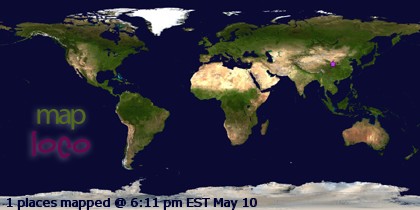 | |
| My Catalan family and me, posing Christmas 2010 with Caga Tio |
The world-famous city of Barcelona is many things: cosmopolitan, rich in history and cuisine, full of pick-pockets, and completely fascinating, to name of a few. It's famous for its storied soccer team and nightlife and for the long-standing independence movement that would separate it and the larger region of Catalunya from the rest of Spain. But that is not what I am here to tell you about.
No, I am here to tell you poop jokes.
I've already taken pains to describe some of the things that make Spanish Christmas unique, but there are a few important -- and, in my opinion, quirkily hilarious-- Catalan traditions that I specifically left to discuss separately. Catalans (people who live in Barcelona and the state of Catalunya) speak a separate romance language; have many separate festivals and holidays; and, if you buy into the prevailing wisdom, are generally more serious and buttoned up than other Iberian people.
... or maybe not so buttoned up. There are two Catalan Christmas traditions that are unique when compared to any others I've heard of anywhere in the world. Celebrating two Christmases in a row (2009 and 2010) in Barcelona gave me a healthy appreciation of both. Warning: if you don't appreciate scatalogical humor, read no further. But if you want to know what poop and the manger in Bethlehem have in common, read on. First up:
1) The Caganer
 | ||
| Vulgar? Yes. Hilarious? Yes. |
No one knows exactly where this tradition comes from, only that it goes back hundreds of years (the first recorded Caganer dates from the 18th century.) Some historians say it's a fertility thing; most throw up their hands in confusion. What's for sure is that the Caganer remains as essential a part of the Catalan creche as the angels or the wise men. In fact, in recent years manufacturars of creche components have started to vary available Caganer options-- they make pooping wise men, pooping angels, pooping politicians and athletes. In googling around for images to post in this entry I saw Obama caganers, Angela Merkel caganers, Leo Messi caganers, and more. Basically, chances are that if there is a person in the public eye somewhere in the world, he or she has been immortalized in porcelain mid-poop and sits festively in a Catalan businessman's nativity scene on the Costa Brava.
2) Caga Tió
 |
| Mr. Poop, himself, ready for action |
Now, say it's the first week in December-- time to decorate your Barcelona apartment! You put up some tinsel; arrange your creche, complete with pooping angel; and head to the Christmas market to find the perfect Pooping Log. The first step in selecting a proper Caga Tió is to decide on size, shape, and temperament. Is he smiling? Is he smoking? Is he tiny or enormous? Which one do you prefer?
 |
| Caga Tiós of all sizes at the Barcelona Christmas market |
Finally, on Christmas Eve, all is prepared. As in other parts of Spain, multiple generations of your family gather together to eat a late, multi-course dinner, which usually includes sopa de galets (soup with pasta shells) and carn d'olla (stewed meet with vegetables.) Then, at midnight everyone sits down together in the living room. Trying not to let the children see, you cover the door with a blanket, place all the presents under a chair behind the blanket, and put Caga Tió in front so all but Mr. Poop himself is hidden from view. (Another common set-up is a stack of gifts covered with a blanket and with Caga Tió as king of the mountain.)
Then the fun starts! The children of the family hit poor Caga Tió, all bloated with 12 days of food, with a stick (we used a wooden spoon) and sing a traditional song. I won't hide how hilarious I find the lyrics, especially in context as sung by angelic-faced children to a lovely tuneful melody.
| Caga tió, caga torró, avellanes i mató, si no cagues bé et daré un cop de bastó. caga tió!" |
Shit, log! shit nougat, hazelnuts and cheese. If you don't shit well, I'll hit you with a stick. Shit, log! |
"Caga tió, Shit, log,
tió de Nadal, log of Christmas!
no caguis arengades, Don't shit herrings,
que són massa salades which are too salty.
caga torrons Shit nougats,
que són més bons! which are much better!
When the log can take no more, one of the adults waiting behind the curtain pushes the presents out from their hiding place behind the blanket, making it appear that Caga Tió is pooping presents. (As one might guess from the lyrics, older traditions had Caga Tió bringing only torrons, or nougat, instead of today's gift haul.) The song is repeated until all the gifts have been opened. The rest of the evening is taken up sitting around the living room singing Christmas songs, drinking coffee or wine, and slowly drifting off to bed. Merry Christmas, indeed!
(If this reminds you of Mr. Hanky the Christmas Poo from "South Park," you aren't the only one. Although I've never ready anything definitive, it seems impossible that the beloved/hated character would have absolutely no connection here.)
*Due to a translation error, this post has been updated throughout
 |
| Merry Christmas in February from Wide Eyes Wider World! |











